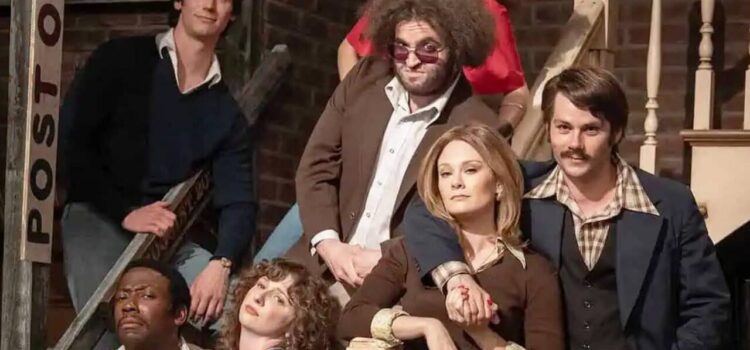By Lynn Venhaus
The unpredictable Not Ready for Prime Time Players would go on to become household names. A shaggy group of irreverent writers would ignite a counterculture revolution with their parodies of contemporary culture and sharp political satire. And a young and scrappy Canadian would lead the inspired chaos of a late-night live sketch comedy show into showbiz history when “Saturday Night” premiered on Oct. 11, 1975.
With “Saturday Night Live” about to celebrate 50 years on television, it’s the right time to revisit the show’s frenetic start in NBC’s Studio 8H in Rockefeller Plaza. Writer-director Jason Reitman’s dramatic comedy finds the beating heart in this runaway train ride depicted in the 90 minutes leading up to the inaugural broadcast.
Along with co-writer Gil Kenan, their “based on a true story” captures the frenetic pace and the backstage lunacy that forever changed late-night comedy. It was a “big bang” that redefined the television landscape, and while a mini-series could do the origin story justice, this focused narrative framework succeeds in pulling back the curtain.
In a kinetic snapshot of what happened that fateful wild and crazy night, Gabriel LaBelle anchors the best ensemble cast of the year as the confident producer Lorne Michaels.
LaBelle, who was impressive as young Steven Spielberg in “The Fabelmans” two years ago, plays the driven big dreamer who believes in his instincts and the largely unknown cast’s talents. He’s the calm circus ringleader in the eye of the storm amidst the gusty winds threatening to blow it all down.
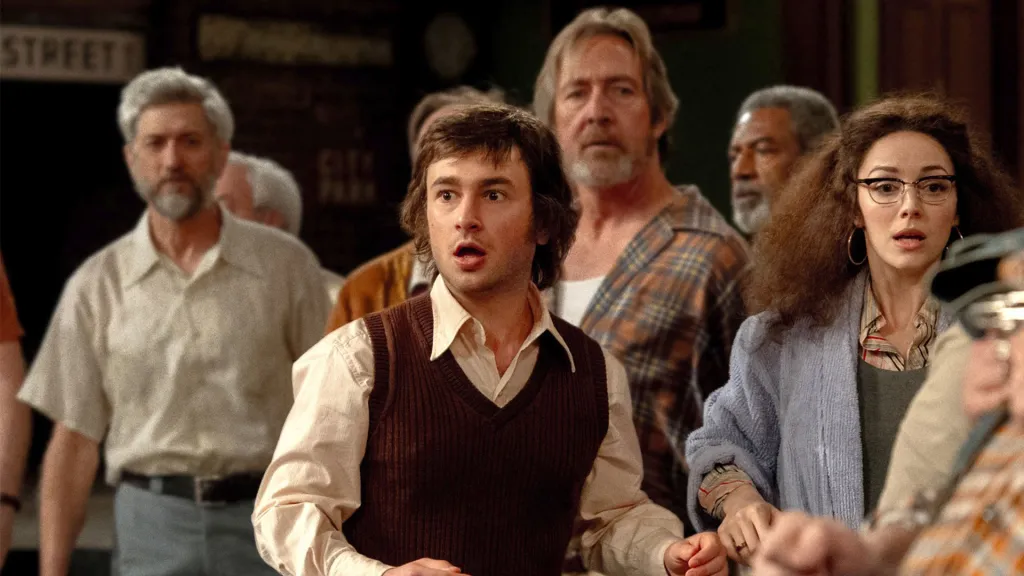
From the start, Michaels has produced all but five years of the show, leaving in 1980 when Jane Curtin, Garrett Morris, Laraine Newman and Gilda Radner were the last original cast members to depart, and returning for the 1985-86 season.
He started out as a comedy writer whose credits included “Rowan & Martin’s Laugh-In” and now oversees a vast empire of last-night television and feature films. Michaels’ first wife, Rosie Shuster, is portrayed by a sharp Rachel Sennott as an integral force, both as a writer and someone putting fires out.
As the clock counts down to the live launch, there isn’t time for in-depth character portrayals; instead, we get snippets of familiar personality traits from those emerging stars Dan Aykroyd (Dylan O’Brien), Gilda Radner (Ella Hunt), Laraine Newman (Emily Fairn), Jane Curtin (Kim Matula) and Garrett Morris (Lamorne Morris, no relation), with Chevy Chase (Cory Michael Smith) and John Belushi (Matt Wood)’s well-documented egos and clashes getting more screen time.
The seven actors quickly convey their quirks and foreshadow the stars they would become. Standouts here include O’Brien as a minutiae devotee and big flirt Aykroyd, Emmy-winning Morris as the underused Morris — a multi-hyphenate perplexed at his inclusion, and Smith as quick-witted, arrogant and self-absorbed Chase, the show’s first break-out movie star.
The women, understandably, are trying to find their place in the boys’ club, which is representative of those early years.
The nostalgia factor is big here for longtime fans of the show, especially those of us who watched the first episode in real time (My college roommates and I tuned in, presumably because we were big George Carlin fans, for we did not recognize the others, except for Billy Preston because he played with The Beatles). A film by Albert Brooks? Jim Henson and his Muppets?

Now, fans of the National Lampoon Radio Hour (1973 – 1974) were familiar with cast members Chevy, Belushi and Gilda. Its creator, Michael O’Donoghue, a jaded, cynical anarchist, went on to be SNL’s cutting-edge head writer for three years. His tussles with the network censors’ red pens must have been headache-inducing.
Reitman’s condensed depiction of legendary writers Al Franken, Tom Davis, Alan Zweibel, and Herb Sargent (Tracy Letts!) is noteworthy. While not all sketch development is accurate timeline-wise, the inclusion of Aykroyd’s Julia Child parody where she gushes blood from a cut artery during a taping of “The French Chef” is a good one to mention – and so is the construction workers’ gender reversal cat calls with Aykroyd as the objectified — even though both were on later shows.
Reitman’s reverence for all things SNL is admirable – and understandable, for it continues to be a force in the cultural zeitgeist. His father, Ivan, directed Aykroyd and Bill Murray in 1984’s biggest box-office hit “Ghostbusters” and other movies featuring alumni.
Jason Reitman’s previous comedies “Juno” and “Up in the Air” showed much potential, so it’s nice to see him navigate this incredible moment in time and do so with a clear-cut vision and savvy casting choices.
Fellow nepo baby (in a good way) Cooper Hoffman, Philip Seymour Hoffman’s son, is a perfect foil as ambitious Dick Ebersol, rocking the polyester suits as the late-night director of programming. (He’d later go on to produce SNL after Michaels’ left.)
Portraying the old guard is Willem Dafoe as humorless network vice president of talent relations Bob Tebet, who’d be happy to run another Johnny Carson “Tonight Show” re-run instead.
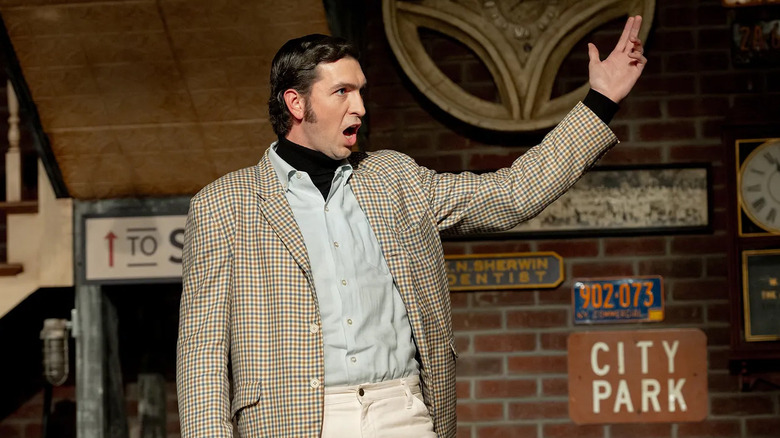
In small but essential roles, musical wunderkind Jon Batiste plays musical guest Billy Preston and Nicholas Braun (Emmy-nominated Cousin Greg on “Succession”) astutely characterizes up-and-coming Andy Kaufman’s brilliant schtick and as a naïve but talented puppeteer Jim Henson, clearly ahead of his time.
Matthew Rhys, Emmy winner for “The Americans,” is a snarling George Carlin who does not want to play nice with others in sketches.JK Simmons swoops in to steal his scenes as cantankerous old-guard comic Milton Berle, representing a different generational style.
Batiste also composed the propulsive original music score, which adds to the fast-paced freewheeling vibe. Reitman’s go-to cinematographer Eric Steelberg offers insight into the adrenaline rush while Jess Gonchor’s production design overstuffs Studio 8H plausibly.
An engaging whirlwind representing a collaborative creative process that sparked a comedic revolution, “Saturday Night” takes us back to an extraordinary leap of faith that resonates today. No need to give us a roadmap of the past half-century because we know the rest of its remarkable history.
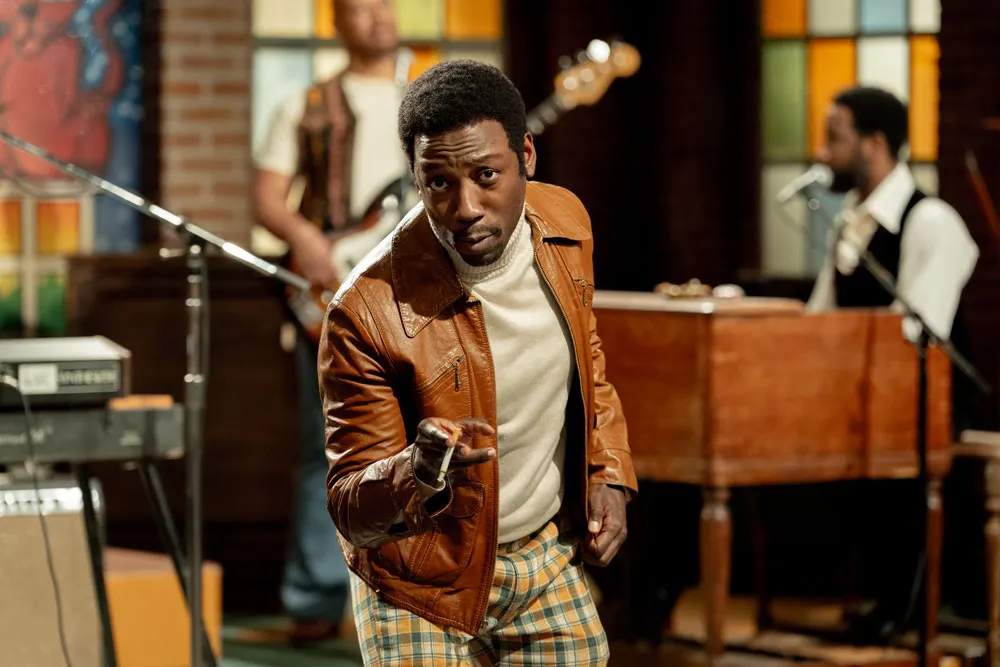
Notes: To learn more, “Live from New York: The Complete, Uncensored History of Saturday Night Live as Told by Its Stars, Writers, and Guests,” first published in 2002, is a definitive oral history by James Andrew Miller and Tom Shales.
Two documentaries on the short, brilliant and troubled lives of two of the show’s biggest stars, “Belushi” (2020) and “Love, Gilda” (2018) are available to watch on subscription streaming services, and for digital rental.
“Saturday Night” is a 2024 comedy based on a true story, directed by Jason Reitman, and starring Gabriel LaBelle, Cooper Hoffman, Willem Dafoe, Cory Michael Smith, Lamorne Morris, Rachel Sennott, Matt Wood, Dylan O’Brien, Ella Hunt, Kim Matula, Emily Fairn, Nicholas Braun, Jon Batiste, Tommy Dewey and JK Simmons. It is rated R for language throughout, sexual references, some drug use and brief graphic nudity and the run time is 1 hour, 49 minutes. It opened in theaters Oct. 11. Lynn’s Grade: A-.
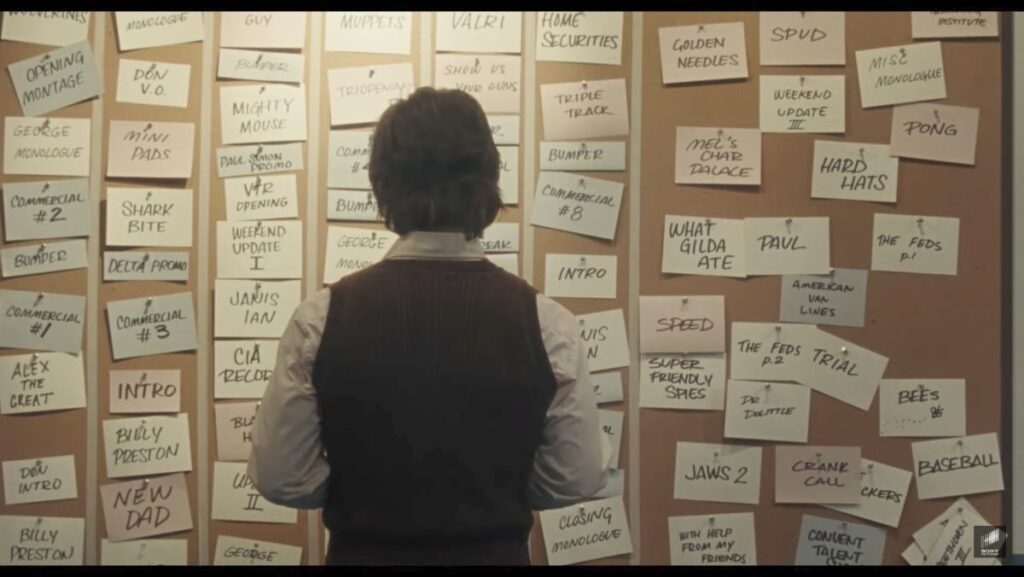

Lynn (Zipfel) Venhaus has had a continuous byline in St. Louis metro region publications since 1978. She writes features and news for Belleville News-Democrat and contributes to St. Louis magazine and other publications.
She is a Rotten Tomatoes-approved film critic, currently reviews films for Webster-Kirkwood Times and KTRS Radio, covers entertainment for PopLifeSTL.com and co-hosts podcast PopLifeSTL.com…Presents.
She is a member of Critics Choice Association, where she serves on the women’s and marketing committees; Alliance of Women Film Journalists; and on the board of the St. Louis Film Critics Association. She is a founding and board member of the St. Louis Theater Circle.
She is retired from teaching journalism/media as an adjunct college instructor.

